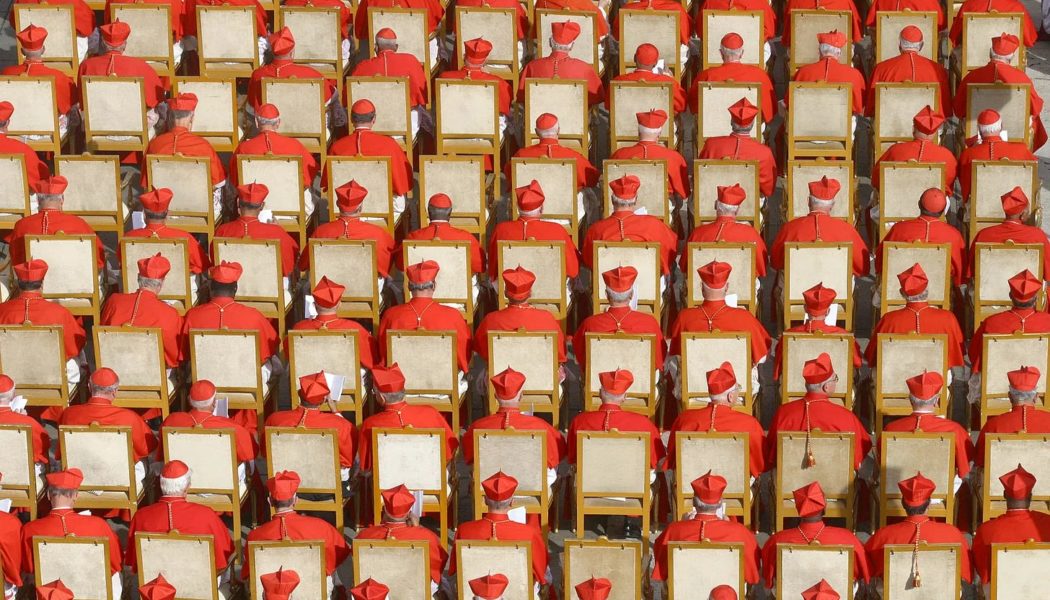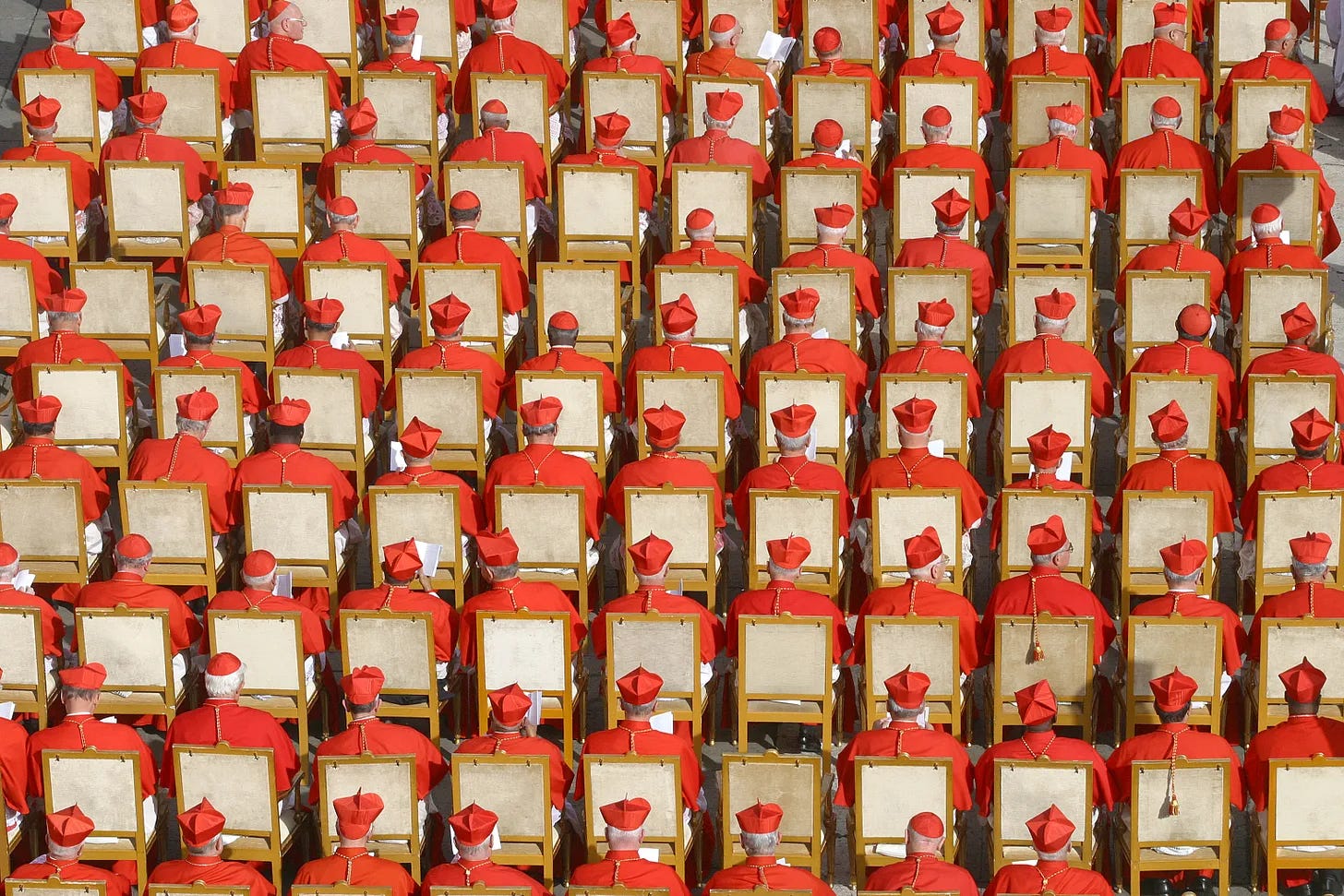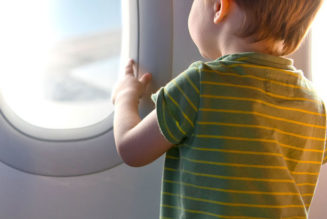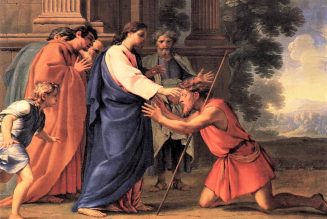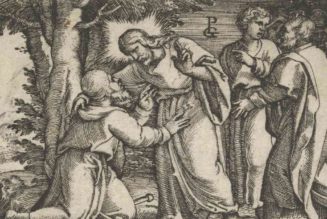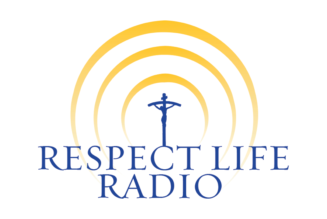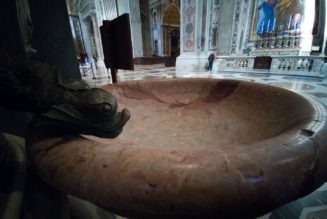Past a certain point in a pontificate, handicapping the frontrunners to succeed the pope becomes an inevitable part of the daily chatter among curial staffers and Vatican journalists.
But the current field of contenders is surprisingly thin, and, given the increasingly critical coverage any potential papabile seems to attract, there may be a real risk for any cardinal seen to be flying too high.
While that may be put down partly to a desire in some quarters to ensure a reliable and effective heir to the Francis pontificate, the result may well be a wide open vote to succeed him.
—
Once a pope passes a certain age or has a major health event, listicles of the top three, or five, or ten contenders in the event of a conclave begin to sprout seasonally, like journalistic perennials.
Unusually, given Francis is now 86 and has survived an urgent recent hospital stay, the field of likely successors has no obvious frontrunners — and those that might be considered likely candidates appear increasingly to be in the media crosshairs.
In recent weeks, following his removal as president of Caritas International, Cardinal Luis Antonio “Chito” Tagle has seen his star dim considerably.
Since before he was brought to Rome by Pope Francis in 2019, the Filipino cardinal had been widely hailed as an “Asian Francis” and an obvious potential successor to the pope, making a star turn during the synod on young people in 2018.
But after Tagle was removed from the presidency of Caritas, the Church’s charitable umbrella organization, previously supportive media coverage has turned sour, noting financial and personnel problems at the charitable group, and even instances of failing to deal with abusive clergy.
Quotes from those close to Tagle have now started appearing in print describing him as “one of the good guys” but a poor manager and organizer who “doesn’t know how to take decisions.”
Some might consider the shift in tone on Tagle, and the newly negative assessment of his leadership credentials, to be a reasonable response to reports of widespread dysfunction at Caritas. But it is worth noting that recent questions about Tagle’s fitness for office have been universally limited to his viability as a future pope — with hardly anyone calling into question his current position as pro-prefect of the Roman curia’s preeminent department, the Dicastery for Evangelization.
Similar scrutiny has recently been applied to Cardinal Péter Erdő following Pope Francis’ trip to Hungary — widely hailed as a diplomatic success and exercise in bridge-building with the country’s prime minister Victor Orban.
As Archbishop of Esztergom-Budapest, Erdő has often appeared deliberately shy of media attention as he navigates his relations with the Hungarian government, while constantly stressing his support for Pope Francis.
But as the cardinal’s profile rose in the wake of the papal visit, he became a clear target for some sections of the Vatican press corps, with the descriptor “conservative” stapled to the front of his name, and reports emerging about how he was the late Cardinal George Pell’s preferred “right-wing” candidate for pope.
Despite making visible efforts to take a back seat to the pope and not overshadow Francis during his visit, the cardinal even faced petty snark from senior Vatican media figures over the kind of car that drove him away from the Budapest airport after seeing the pope onto his plane.
If Tagle and Erdő can be said, perhaps inelegantly, to represent the “left” and “right” of the field of possible papal contenders, the middle lane is facing a squeeze, too. When Pope Francis appointed Bologna’s Cardinal Matteo Zuppi as the new president of the Italian bishops’ conference, he was widely hailed as a “bishop in Francis’ own image” and enjoyed several months of positive coverage.
As the cardinal began to hit his stride in the role, becoming a leading voice in the Church’s engagement with Italian politics, he was initially pegged as a strong contender for a future conclave. But this favorable coverage dried up in October last year, after he led vespers for the “Populus Summorum Pontificum” pilgrimage to Rome for adherents to the extraordinary form of the liturgy.
Although Zuppi was keen to note that he’d agreed to take part in the event, at which he delivered a short homily, before he’d been named president of the conference, and even though he stressed his belief in implementing the pope’s 2021 motu proprio Traditiones custodes “with great awareness and with great responsibility,” talk of him as an obvious heir to Francis has almost entirely dried up.
Around the Vatican, meanwhile, praise for Zuppi’s engagement in Italian cultural and political discussions has cooled notably. While Zuppi himself remains vocally and explicitly “pro-Francis,” there are many voices around the papal court who now say the cardinal is getting “too big for his boots.”
—
If it now seems difficult for any cardinal to maintain a high profile without coming in for personal criticism, it might help account for a curia increasingly lacking in big personalities.
While Francis inherited a Vatican staffed with many well known figures, they have generally been phased out or aged into retirement without notable big characters arriving to replace them — with the possible exception of Tagle, of course.
While some, like Cardinals Gerhard Müller and Raymond Burke have gone on to emerge as vocal critics of Francis, others, like Cardinals Fernando Filoni and Mauro Piacenza, have gone quietly into relative obscurity.
In their place, Francis has opted for a mix of curial outsiders and promotions from within, like bringing Cardinal Lazarus You Heung-sik all the way from South Korea to lead the Dicastery for Clergy while promoting the Jesuit Cardinal Luis Ladaria Ferrer at the Dicastery for the Doctrine of the Faith.
But a common theme among the new curial leadership class seems to be a preference for relative invisibility, with those who poke their heads over the top liable to come in for swift public criticism, even when doing the pope’s bidding — as Cardinal Ladaria found when he became the locus of criticism for a papally approved document rejecting church blessings for same-sex couples.
With the possible exception of Cardinal Pietro Parolin at the Secretariat of State — whose viability in a future conclave has suffered from the drumbeat of financial scandal at his department and his ownership of the controversial Vatican-China deal — those senior Francis appointments who have fared best in the press tend to be those who keep the lowest profiles.
It might be tempting to see the increasingly negative coverage of papabile cardinals as proof of a more general polarization in Church life and tribal sniping from all sides. But it is interesting to note that the criticism of potential future popes seems only ever to come from the self-described “pro-Francis” wing of Catholic media: Cardinals like Tagle or Zuppi don’t tend to come in for scrutiny for being too liberal, or progressive on matters of ecclesiology or Church teaching — at least not to the point of them being considered out of the running in a conclave.
And, perhaps ironically, the spate of critical coverage may actually be hammering Francis himself from getting his own appointments.
Earlier this year, the pope named Bishop (now Archbishop) Robert Prevost as the new prefect of the Dicastry for Bishops, putting him in charge of a department he’d first been made a member of in 2020.
While many saw Prevost’s appointment to succeed the 78 year-old Cardinal Marc Ouellet (perhaps the last big beast left in the Vatican jungle) as a move three years in the making, it is widely known around the dicastery that Francis had actually wanted to name a new prefect some time ago.
Officials at the department have quietly acknowledged for years that the dicastery’s influential secretary, Archbishop Ilson de Jesus Montanari, was Francis’ first choice for the job, but that he turned the appointment down more than once.
Sources close to the archbishop have said consistently that he feared becoming a “tall poppy” in the Vatican field and preferred to remain in his secondary role until he could return to his native Brazil to lead an archdiocese.
—
It’s unclear, and to a degree impossible to know for sure, if the kind of disqualifying coverage being given to cardinals like Tagle and Erdő in recent weeks is part of a conscious campaign, or something more organic.
It’s equally unknowable if it represents a kind of reflexive defense of Francis as a pope who is going nowhere soon and need suffer no rivals, or a coordinated attempt to clear the path for a consensus ideal successor to him — with the synodal czar Cardinal Mario Grech being one possible option.
In either event, the result may be shaping into something else entirely.
The next conclave, whenever it happens, is already set to be uniquely unpredictable, thanks to the increasingly infrequent consistories at which cardinals have traditionally got to know one another. Public perceptions are now likely to shape private impressions among the electors more than ever before. And what they are increasingly reading is that no one is either good enough, or sufficiently loyal to Pope Francis, to make a worthy successor.
If that impression holds, it could ironically shape a mood among the cardinals that trying to find a “continuity-Francis” candidate is actually a dead end. That could prompt them to consider more peripheral figures among them, and make the odds of a truly unexpected next pope ever shorter.
Comments 38
Services Marketplace – Listings, Bookings & Reviews
